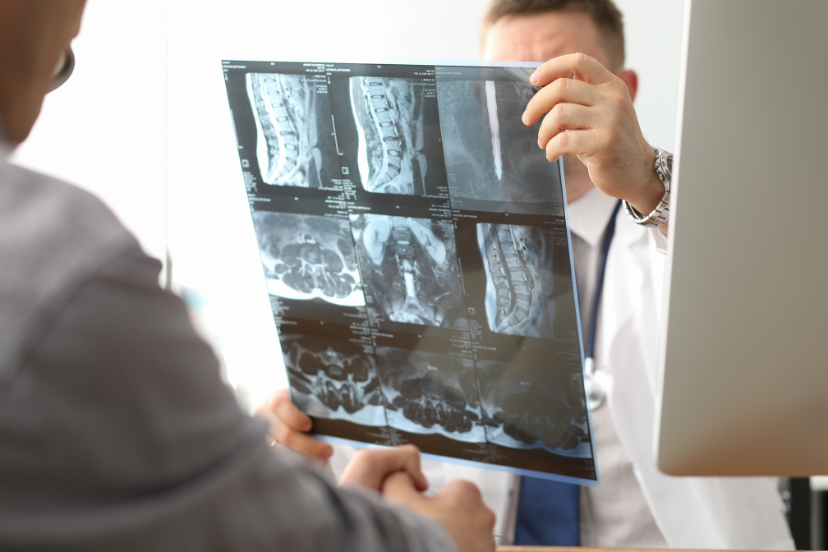Understanding Osteoporosis Fracture Risk: The Hidden Dangers
Introduction
Welcome to our comprehensive guide on osteoporosis fracture risk – a topic often overlooked until it’s too late. In this article, we’ll navigate through the intricate terrain of bone health, uncovering the hidden dangers posed by osteoporosis fractures. Whether you’re a young adult or approaching your golden years, understanding these risks is paramount for safeguarding your skeletal strength and overall well-being.
Osteoporosis Fracture Risk
Osteoporosis fracture risk is not just a concern for the elderly. While aging does increase susceptibility, this silent condition can affect individuals of all ages and backgrounds. Defined by weakened bones prone to fractures, osteoporosis poses a significant threat to mobility, independence, and quality of life. But how exactly does osteoporosis elevate fracture risk? Let’s delve deeper into the mechanisms at play.
The Role of Bone Density
At the heart of osteoporosis fracture risk lies bone density – the measure of mineral content within bones. When bone density declines, as is characteristic of osteoporosis, bones become brittle and more susceptible to fractures even from minor impacts or falls. This reduction in bone density is often a gradual process, making it imperative to proactively monitor and address bone health.
Nutritional Factors and Osteoporosis
A balanced diet rich in calcium and vitamin D is crucial for maintaining optimal bone health and minimizing osteoporosis fracture risk. Calcium serves as the building block for bones, while vitamin D aids in calcium absorption. Incorporating dairy products, leafy greens, and fortified foods into your diet can help fortify your bones against fractures.
The Impact of Lifestyle Choices
Beyond nutrition, lifestyle choices play a pivotal role in determining osteoporosis fracture risk. Sedentary habits, excessive alcohol consumption, and smoking can accelerate bone loss, exacerbating susceptibility to fractures. Conversely, engaging in weight-bearing exercises and adopting healthy habits can bolster bone strength and resilience.
Hormonal Influences on Bone Health
Hormonal imbalances, particularly in estrogen levels, can significantly impact bone health and contribute to osteoporosis fracture risk. Women, especially post-menopausal women, are particularly susceptible due to declining estrogen levels. Hormone replacement therapy and lifestyle modifications may mitigate this risk, but consultation with a healthcare professional is essential.
Genetic Predisposition and Osteoporosis
While lifestyle factors play a significant role, genetic predisposition also contributes to osteoporosis fracture risk. Family history of osteoporosis or fractures may increase your susceptibility, underscoring the importance of proactive screening and preventive measures.
Preventive Measures
Fortunately, there are proactive steps you can take to mitigate osteoporosis fracture risk and safeguard your skeletal health. From dietary adjustments to lifestyle modifications, incorporating these preventive measures into your routine can make a world of difference:
- Regular Exercise: Engage in weight-bearing exercises such as walking, jogging, or resistance training to stimulate bone growth and enhance strength.
- Balanced Diet: Consume calcium-rich foods like dairy products, broccoli, and almonds, supplemented with vitamin D for optimal absorption.
- Avoidance of Risky Behaviors: Minimize alcohol consumption, quit smoking, and prioritize safety measures to prevent falls and fractures.
- Bone Density Testing: Regular screenings for bone density can help detect early signs of osteoporosis and guide preventive interventions.
- Medication Management: In cases of diagnosed osteoporosis, adherence to prescribed medications and treatment plans is paramount for mitigating fracture risk.
- Consultation with Healthcare Providers: Maintain open communication with your healthcare provider to address any concerns or symptoms promptly.
FAQs (Frequently Asked Questions)
1. What are the primary risk factors for osteoporosis fracture?
- Age, gender, family history, hormonal imbalances, and lifestyle choices such as diet and physical activity all contribute to osteoporosis fracture risk.
2. Can osteoporosis be prevented through lifestyle changes alone?
- While lifestyle modifications play a significant role in reducing osteoporosis fracture risk, they may not eliminate it entirely, especially in cases of genetic predisposition or hormonal imbalances.
3. At what age should individuals begin screening for osteoporosis?
- Screening guidelines typically recommend bone density testing for women aged 65 and older and men aged 70 and older. However, earlier screening may be warranted for individuals with specific risk factors or medical conditions.
4. Are there any dietary supplements that can help prevent osteoporosis fractures?
- Calcium and vitamin D supplements are commonly recommended to support bone health. However, it’s essential to consult with a healthcare provider before initiating any supplementation regimen to ensure proper dosage and suitability.
5. Can osteoporosis fractures occur without any preceding symptoms?
- Yes, osteoporosis fractures, particularly vertebral fractures, can occur suddenly without significant pain or warning signs. This underscores the importance of proactive screening and preventive measures.
6. Are men at risk of developing osteoporosis fractures?
- While osteoporosis is more prevalent in women, men are also susceptible, especially with advancing age or certain medical conditions. It’s essential for men to be aware of their risk factors and take proactive steps to protect their bone health.
Conclusion
In conclusion, osteoporosis fracture risk is a multifaceted concern that requires proactive attention and preventive action. By understanding the underlying mechanisms, implementing lifestyle modifications, and seeking guidance from healthcare professionals, individuals can mitigate their susceptibility to fractures and preserve their skeletal health for years to come. Don’t wait until it’s too late – prioritize your bone health today and embark on a journey towards a stronger, fracture-resistant future.




